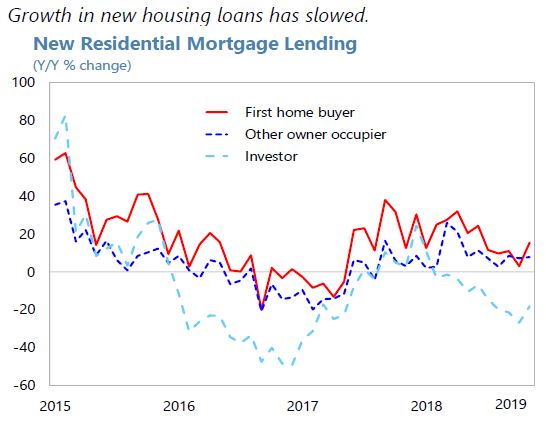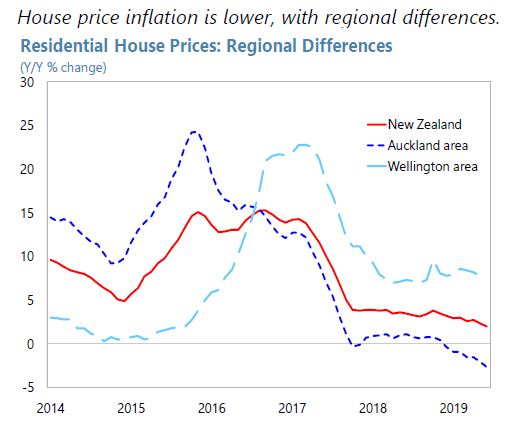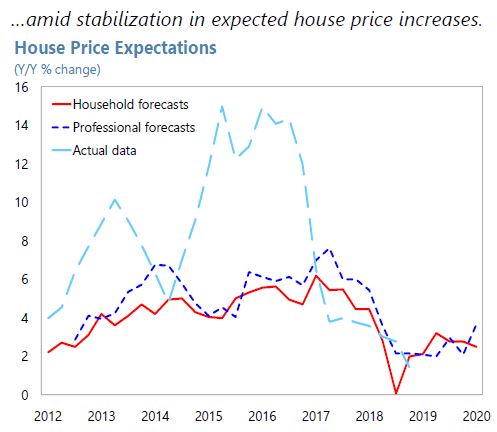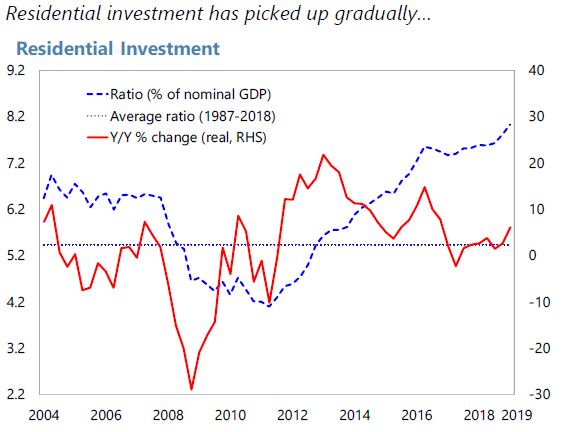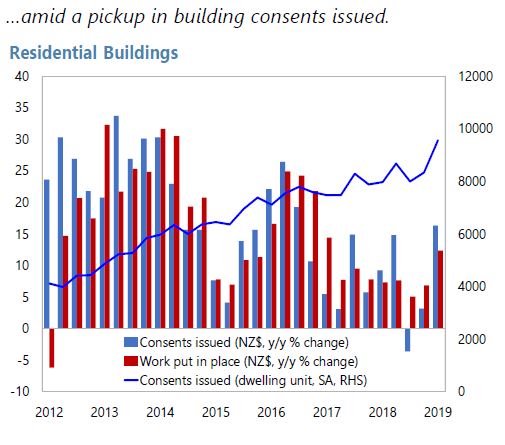Wednesday, September 25, 2019
Public economics and public policy: The ideas and influence of Martin Feldstein, 1939-2019
From a VOX post by James Poterba and Lawrence H. Summers:
“Martin Feldstein, who passed away in June 2019, was one of the most important applied economists of the last half-century. This column, by two of his students and close colleagues, celebrates his intellectual legacy, outlining his seminal contributions on a wide range of topics in public economics and beyond, his pioneering use of large data sets, and his influential voice in US public policy over many decades. As president of the National Bureau of Economic Research for nearly 30 years, Feldstein advanced the conduct and dissemination of economic research, and helped to create the modern economics profession.”
See my profile of Martin Feldstein here.
From a VOX post by James Poterba and Lawrence H. Summers:
“Martin Feldstein, who passed away in June 2019, was one of the most important applied economists of the last half-century. This column, by two of his students and close colleagues, celebrates his intellectual legacy, outlining his seminal contributions on a wide range of topics in public economics and beyond, his pioneering use of large data sets, and his influential voice in US public policy over many decades.
Posted by at 9:58 AM
Labels: Profiles of Economists
Saturday, September 21, 2019
How Should We Measure City Size? Theory and Evidence Within and Across Rich and Poor Countries
From a new paper co-authored with Remi Jedwab, and Anthony Yezer:
“It is obvious that holding city population constant, differences in cities across the world are enormous. Urban giants in poor countries are not large using measures such as land area, interior space or value of output. These differences are easily reconciled mathematically as population is the product of land area, structure space per unit land (i.e., heights), and population per unit interior space (i.e., crowding). The first two are far larger in the cities of developed countries while the latter is larger for the cities of developing countries. In order to study sources of diversity among cities with similar population, we construct a version of the standard urban model (SUM) that yields the prediction that the elasticity of city size with respect to income could be similar within both developing countries and developed countries. However, differences in income and urban technology can explain the physical differences between the cities of developed countries and developing countries. Second, using a variety of newly merged data sets, the predictions of the SUM for similarities and differences of cities in developed and developing countries are tested. The findings suggest that population is a sufficient statistic to characterize city differences among cities within the same country, not across countries.”
From a new paper co-authored with Remi Jedwab, and Anthony Yezer:
“It is obvious that holding city population constant, differences in cities across the world are enormous. Urban giants in poor countries are not large using measures such as land area, interior space or value of output. These differences are easily reconciled mathematically as population is the product of land area, structure space per unit land (i.e., heights), and population per unit interior space (i.e.,
Posted by at 12:41 PM
Labels: Global Housing Watch
Housing Affordability in New Zealand
From the IMF’s latest report on New Zealand:
“The government is refocusing elements of its multi-pronged approach to improve housing affordability.
- On the demand side, the policy measures so far have included an increase in the accommodation supplement—a cash subsidy linked to low-income recipients’ actual rents or home ownership costs; the extension from two to five years of the period during which capital gains on residential investment property are taxed (“bright line test”); a change in the tax treatment of residential rental losses, which can only be deducted from future taxable income from rental properties rather than taxable income in general; and a ban on the purchase of residential property by nonresidents under the Overseas Investment Amendment Act.
- On the supply side, the implementation of the KiwiBuild program—where the government plans to build 100,000 affordable homes for first-time home buyers over ten years from 2018—is lagging. The government is currently considering a reset of the program, which is likely to be smaller in scale and more regional needs-based, while at the same time prioritizing social housing, and rent support for low-income households. The Urban Growth Agenda is the umbrella for other measures on the supply side, including related to planning, zoning, and the provision of housing-related infrastructure.
- On the institutional side, the government established the Ministry of Housing and Urban Development, consolidating responsibilities for the housing agenda. The government agency Kāinga Ora―Homes and Communities was established as the lead developer for affordable homes and social housing.
Staff’s Views
- Improving housing affordability would lower macrofinancial risks and contribute to more sustainable growth. Housing affordability has barely improved, notwithstanding the housing market cooling. House prices are expected to continue rising under the baseline economic outlook. Demand for housing is likely to remain strong, given population growth and low interest rates, while the supply response is constrained by land use and other restrictions. Construction costs are high. Improving housing affordability would reduce inequality and contribute to lower macrofinancial risks, and, in the longer term, make growth more sustainable, including by supporting productivity through agglomeration externalities. Supply-side reforms are central for broad improvements in affordability, although additional direct support might be required for some lower-income households.
- The government’s continued focus on advancing its comprehensive housing policy agenda is welcome. The consolidation for housing-related policies in one Ministry should help in policy implementation. Steps taken to support local governments’ infrastructure funding and financing to facilitate timely infrastructure provision are welcome developments.
- Nonetheless, the housing policy agenda could benefit from some further measures. The objectives of the KiwiBuild program could, at lower risk to the budget, be achieved through other means, including, for example, temporary tax credits for the construction sector to adopt new technology, rather than the government taking on the role of a developer. Staff welcomes the government’s intention to consider adding elements of tax reform, such as a tax on all vacant land, to the agenda. A broad land tax, for example, would support more efficient land use. Since the comprehensive agenda should foster housing affordability on a non-discriminatory basis, the ban on purchases of residential property by nonresidents should be removed, given its use is not in line with the IMF’s Institutional View (IV) on capital flows. At the local level, there should be reforms to simplify and standardize zoning and permit local councils to actively plan for and enable housing supply growth and planning reforms.
Authorities’ Views
- The implementation of the government’s multi-pronged approach to improve housing affordability is advancing. A more comprehensive housing policy agenda is taking shape, including increased focus on making housing for lower income households more affordable through a better accommodation supplement. The authorities highlighted that, in addition to the housing related measures already put in place, the new Ministry of Housing and Urban Development has reinforced institutional capacity to deliver the full breadth of the housing plan, including on the legislative changes needed to ensure more affordable houses and the related infrastructure development. The ministry will be supported by a new government entity for affordable housing development, Kāinga Ora―Homes and Communities, to strengthen delivery.
- The authorities do not consider the restrictions on purchases of residential property by nonresidents to be a CFM measure. The restrictions do not aim to affect capital flows or resolve a balance of payments issue. They are a demand-side measure to ban overseas speculators against the backdrop of the government’s comprehensive housing agenda. The goal is to create a housing market with prices shaped by New Zealanders, and to make homes more affordable. They also pointed out that the Phase I review of the Overseas Investment Act (OIA) not only brought residential land into the category of sensitive land but also simplified the rules for investment in forestry by overseas persons.”
From the IMF’s latest report on New Zealand:
“The government is refocusing elements of its multi-pronged approach to improve housing affordability.
- On the demand side, the policy measures so far have included an increase in the accommodation supplement—a cash subsidy linked to low-income recipients’ actual rents or home ownership costs; the extension from two to five years of the period during which capital gains on residential investment property are taxed (“bright line test”);
Posted by at 12:25 PM
Labels: Global Housing Watch
Friday, September 20, 2019
Housing View – September 20, 2019
On cross-country:
- Q2 2019: house price slowdown in Asia-Pacific, North America, and some parts of the Middle East, though Europe’s boom continues. – Global Property Guide
On the US:
- Why Are American Homes So Big? – The Atlantic
- How We Know California’s New Rent Control Law Will Make Its Housing Shortage Worse – Foundation for Economic Education
- Why Can’t California Solve Its Housing Crisis? – Rolling Stone
- Statewide California Rent Control: Shooting The Price Messenger – Cato
- California Zoning: Housing Construction and a New Ranking of Local Land Use Regulation – George Mason University
- Airbnb pledges $25 million to support affordable housing and small business – Los Angeles Times
- A Golden State Mayor Takes On the Nimbys – Wall Street Journal
- One in Four of New York’s New Luxury Apartments Is Unsold – New York Times
- New Paper Details the Dramatic Decline of Low-Cost Rentals – Harvard Joint Center for Housing Studies
- How Deep Is the GSE ‘Economic Moat’? – Harvard Joint Center for Housing Studies
- How Once-Doomed Mortgage Giants Gained New Lease on Life – Wall Street Journal
- Comment Letter to the Consumer Financial Protection Bureau on the Qualified Mortgage Rule – Urban Institute
- How Debt Burden Affects FHA Mortgage Repayment, in Six Charts – Urban Institute
- HUD’s Proposal to Revise the Disparate Impact Standard Will Impede Efforts to Close the Homeownership Gap – Urban Institute
- Three Ways Fintech Is Changing Homebuying—And Three Important Questions – Urban Institute
- Housing Finance At A Glance: A Monthly Chartbook, August 2019 – Urban Institute
On other countries:
- [Australia] Australia’s house prices are now in free fall – Global Property Guide
- [Barbados] Barbados’ two-tiered housing market – Global Property Guide
- [Chile] Chile’s house prices are rising strongly – Global Property Guide
- [China] China’s house price boom over in the 1st tier cities – Global Property Guide
- [Costa Rica] Costa Rica’s thriving housing market – Global Property Guide
- [Egypt] Egypt’s house prices falling sharply – Global Property Guide
- [India] India’s property market remains weak, amidst a slowing economy – Global Property Guide
- [Indonesia] Indonesia’s housing market rarely makes big moves – Global Property Guide
- [Ireland] Ireland’s housing market is slowing rapidly – Global Property Guide
- [Mexico] Mexico’s housing market is strengthening – Global Property Guide
- [Saudi Arabia] Is Saudi Arabia’s house price decline about to end? – Global Property Guide
- [South Africa] South Africa’s house price appreciation remains below inflation – Global Property Guide
- [Spain] Spain’s housing market remains healthy – Global Property Guide
- [St. Lucia] Saint Lucia is still a buyer’s market, despite its beauty and increasing buzz – Global Property Guide
- [Taiwan] Taiwan’s housing market improving – Global Property Guide
- [United Kingdom] Has St Ives’ second home ban backfired? – Financial Times
- [United Kingdom] The UK’s housing market is slowing sharply – Global Property Guide
- [United Arab Emirates] UAE’s property prices fall further – Global Property Guide
On cross-country:
- Q2 2019: house price slowdown in Asia-Pacific, North America, and some parts of the Middle East, though Europe’s boom continues. – Global Property Guide
On the US:
- Why Are American Homes So Big? – The Atlantic
- How We Know California’s New Rent Control Law Will Make Its Housing Shortage Worse – Foundation for Economic Education
- Why Can’t California Solve Its Housing Crisis?
Posted by at 5:00 AM
Labels: Global Housing Watch
Wednesday, September 18, 2019
Advancing Inclusive Growth in Cambodia
Interesting new research in this IMF WP by Niels-Jakob H Hansen and Albe Gjonbalaj:
“Over the last two decades, Cambodia’s consumption inequality and poverty have declined. However, income inequality is higher, and large gaps remain between urban and rural residents. At the same time, domestic revenue mobilization has improved substantially, but collection of tax revenue is biased towards non-progressive sources. We use the model to evaluate the growth and inequality impact of reforms that increase infrastructure spending by raising (i) VAT, (ii) property tax, or (iii) personal income tax. We find that using property taxes delivers the largest increase in GDP and reduction in inequality. Reaping the gains from property taxation will however require additional investments in tax administration”
Interesting new research in this IMF WP by Niels-Jakob H Hansen and Albe Gjonbalaj:
“Over the last two decades, Cambodia’s consumption inequality and poverty have declined. However, income inequality is higher, and large gaps remain between urban and rural residents. At the same time, domestic revenue mobilization has improved substantially, but collection of tax revenue is biased towards non-progressive sources. We use the model to evaluate the growth and inequality impact of reforms that increase infrastructure spending by raising (i) VAT,
Posted by at 12:33 PM
Labels: Inclusive Growth
Subscribe to: Posts




